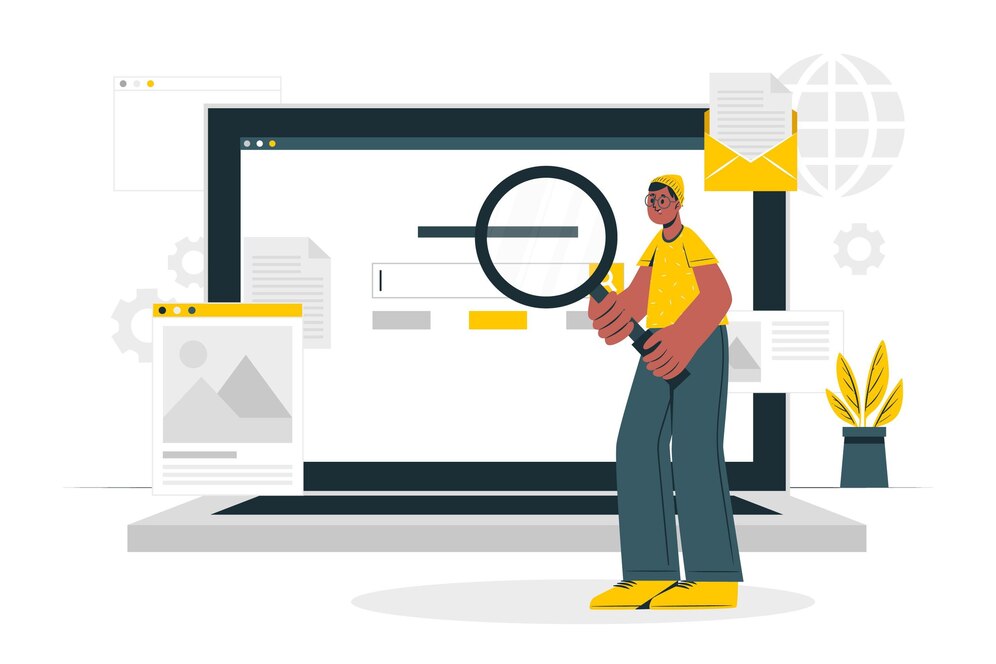What you will learn from this article:
- Definition and significance of crawl budget for SEO.
- How to analyze crawl stats and optimize crawl budget.
- Strategies for improving crawl efficiency and maximizing crawl budget.
Are you looking to improve your website’s visibility and search engine rankings? One crucial factor to consider is crawl budget optimization. By understanding and optimizing your crawl budget, you can enhance your SEO performance and ensure that search engines effectively crawl and index your content. In this article, we will delve into the concept of crawl budget, its significance for SEO, and the strategies you can employ to maximize it.
What is Crawl Budget?
Crawl budget refers to the number of pages that search engines allocate for crawling on your website within a given timeframe. It encompasses the resources search engines dedicate to crawling and indexing your web pages. Crawl budget is crucial because it determines how effectively search engines can discover and index your content.
Search engines, such as Google, allocate crawl budget based on various factors, including the authority and quality of your website, the frequency of content updates, and the speed at which your server can handle requests. By understanding and optimizing crawl budget, you can ensure that search engines prioritize crawling and indexing your most important pages.
Analyzing Crawl Stats
To optimize your crawl budget, it is essential to analyze crawl stats. Tools like Google Search Console provide valuable insights into the crawling activity on your website. By accessing crawl data, you can identify patterns or issues that may be impacting your crawl budget.
When analyzing crawl stats, pay attention to metrics such as crawl frequency, pages crawled per day, and response codes. Crawl frequency indicates how often search engines crawl your website, while pages crawled per day reveals the number of pages crawled within a specific timeframe. Response codes, such as 200 (OK), 404 (not found), or 301 (redirect), provide insights into the health of your website.
By interpreting crawl data, you can identify potential crawl budget optimization opportunities. For instance, if you notice a low crawl frequency, it may indicate that search engines are not prioritizing your website for crawling. On the other hand, a high number of 404 errors could suggest that search engines are wasting resources on non-existent pages.
Optimizing Site Structure and Navigation
A clear and logical site structure is crucial for optimizing your crawl budget. Search engines rely on your website’s hierarchy to understand the organization of your content. Ensure that your website has a well-defined hierarchy with a logical flow from the homepage to deeper pages.
Use descriptive URLs that accurately reflect the content of each page. Organize your content into categories and subcategories to make it easier for search engine bots to navigate and understand your website’s structure. This not only enhances crawlability but also improves the user experience.
Internal linking is another crucial aspect of optimizing crawl budget. Implement a strategic internal linking strategy to guide search engine bots to important pages. By linking relevant pages together, you can ensure that search engines discover and crawl all the essential parts of your website. Use anchor text that includes relevant keywords to enhance the visibility of linked pages.
| Strategies for Optimizing Crawl Budget | Description |
|---|---|
| Analyzing Crawl Stats | – Analyze crawl frequency, pages crawled per day, and response codes to identify optimization opportunities |
| Optimizing Site Structure and Navigation | – Create a clear and logical site structure- Use descriptive URLs- Organize content into categories and subcategories- Implement strategic internal linking |
| Regularly Update and Maintain XML Sitemap | – Add or remove pages from your website and update the XML sitemap accordingly- Submit the updated sitemap to search engines |
Regularly Update and Maintain XML Sitemap
An XML sitemap is a file that lists all the pages on your website and provides valuable information to search engines about your site’s organization. It helps search engine bots navigate through your website and discover new pages. Regularly updating and maintaining your XML sitemap is essential for optimizing your crawl budget.
When you add or remove pages from your website, make sure to update your XML sitemap accordingly. By submitting the updated sitemap to search engines, you can ensure better crawl efficiency. This increases the chances of your new pages being discovered and indexed promptly.
Optimizing Page Load Speed
Page load speed is a critical factor that affects both user experience and crawl budget. Slow-loading pages not only frustrate users but also make it challenging for search engine bots to crawl and index your website effectively. By improving page load speed, you can enhance both user experience and crawlability.
Optimize your images by compressing them without compromising quality. Minify CSS and JavaScript files to reduce their file size. Leverage browser caching to store frequently accessed files on the user’s device, reducing the need for repeated downloads. Tools like Google PageSpeed Insights can help you identify and fix speed-related issues on your website.
Eliminating Duplicate Content
Duplicate content can negatively impact your crawl budget and SEO performance. When search engines encounter duplicate content, they must decide which version to index, which can waste crawl resources. To optimize your crawl budget, it is crucial to identify and resolve duplicate content issues.
Use canonical tags or 301 redirects to indicate the preferred version of a page. Canonical tags inform search engines that a specific URL represents the master copy of a page, avoiding duplicate indexing. Similarly, 301 redirects redirect users and search engine bots to the preferred version of a page. Implementing a consistent URL structure across your website also helps prevent duplicate indexing.
Monitoring and Fixing Crawl Errors
Crawl errors can hamper your crawl budget and prevent search engines from efficiently crawling your website. It is essential to regularly monitor crawl errors using tools like Google Search Console and promptly fix them.
Common crawl errors include 404 pages (pages not found) and broken links. When search engine bots encounter these errors, they waste crawl resources that could be better utilized elsewhere. Implement redirects or update internal links to resolve crawl errors and ensure that search engine bots can access all your important pages.
Case Study: Maximizing Crawl Budget for Improved SEO Performance
Meet Sarah, the owner of an online clothing store called “FashionFinds”. Sarah had been struggling to improve her website’s search engine rankings and organic traffic. After conducting some research, she learned about the concept of crawl budget and its impact on SEO performance. Determined to optimize her website’s crawl budget, Sarah implemented various strategies and saw significant improvements.
Analyzing Crawl Stats
Using Google Search Console, Sarah accessed her website’s crawl stats. She noticed that her website was being crawled infrequently, and only a limited number of pages were being indexed. This indicated that her crawl budget was not being efficiently utilized. Sarah decided to analyze the crawl data to identify any patterns or issues that were impacting her crawl budget.
Optimizing Site Structure and Navigation
Sarah realized that her website’s structure and navigation were not well-optimized. Pages were not organized into clear categories, and internal linking was lacking. She restructured her website, creating a logical hierarchy and implementing descriptive URLs. Sarah also improved internal linking, ensuring that search engine bots could easily navigate to important pages.
Regularly Updating and Maintaining XML Sitemap
To further enhance crawl efficiency, Sarah generated an XML sitemap that included all relevant pages of her website. Whenever new pages were added or removed, she promptly updated the sitemap and submitted it to search engines. This ensured that the crawl budget was focused on important and updated content.
Optimizing Page Load Speed
Understanding the impact of page load speed on crawl budget, Sarah took steps to improve her website’s loading time. She optimized images, minified CSS and JavaScript, and leveraged browser caching. Using tools like Google PageSpeed Insights, Sarah identified and fixed speed-related issues, resulting in faster page load times.
Eliminating Duplicate Content
Sarah discovered that her website had some duplicate content issues, which were negatively affecting her crawl budget. She implemented canonical tags and 301 redirects to indicate preferred versions of pages. Sarah also ensured a consistent URL structure to prevent duplicate indexing.
Monitoring and Fixing Crawl Errors
Regularly checking for crawl errors using Google Search Console, Sarah identified and fixed issues such as 404 pages and broken links. She implemented redirects and updated internal links to resolve crawl errors promptly. By doing so, Sarah improved her website’s crawlability and optimized her crawl budget.
Through these efforts, Sarah successfully maximized her website’s crawl budget, resulting in improved SEO performance. Her website started ranking higher in search engine results, leading to increased organic traffic and ultimately more sales for her online clothing store. Sarah’s dedication to optimizing her crawl budget proved to be a game-changer for her business.
By following Sarah’s example and implementing the strategies discussed in this article, you too can boost your SEO performance by maximizing your crawl budget. Stay vigilant, regularly monitor and maintain your website, and watch your rankings soar.
Prioritizing Crawling of Important Pages
Not all pages on your website are of equal importance. Some pages, such as your homepage or key landing pages, hold more value and should receive more attention from search engine bots. By prioritizing the crawling of important pages, you can ensure that search engines discover and index them promptly.
Use robots.txt or meta robots tags to indicate the priority of crawling for specific pages. Make sure that important pages are easily accessible and linked from the homepage or main navigation. Optimize metadata and headings on these pages to improve their visibility and relevance to search engines.
Monitoring and Optimizing URL Parameters
URL parameters can impact your crawl budget, especially when they create multiple versions of the same page. Analyze the impact of URL parameters on your crawl budget and take steps to control their crawling.
Tools like Google Search Console or URL parameter settings allow you to specify how search engine bots should handle parameterized URLs. Set preferred versions of parameterized URLs to prevent unnecessary crawling and avoid wasting crawl resources on duplicate or irrelevant content.
Monitoring External Factors
External factors can also impact your crawl budget. It is crucial to keep an eye on these factors and address any issues promptly. Monitor your server’s performance to ensure it can handle increased crawl demand during peak periods.
A slow or overloaded server can negatively affect crawlability and result in search engine bots abandoning the crawling process prematurely. Ensure that your website’s hosting provider can handle the demands of search engine crawling to maximize your crawl budget.
In conclusion, optimizing your crawl budget is essential for improving your website’s visibility and search engine rankings. By implementing the strategies discussed in this article, you can enhance your SEO performance and ensure that search engines effectively crawl and index your content. Remember to regularly analyze crawl stats, optimize site structure and navigation, update your XML sitemap, improve page load speed, eliminate duplicate content, fix crawl errors, prioritize important pages, monitor and optimize URL parameters, and consider external factors. By doing so, you’ll be on your way to maximizing your crawl budget and boosting your SEO performance.
Answers To Common Questions
Q: What is a crawl budget?
A: A crawl budget is the number of pages a search engine will crawl on your website within a specific timeframe.
Q: Who determines the crawl budget?
A: Search engines like Google determine the crawl budget for each website based on various factors.
Q: How can I optimize my crawl budget?
A: You can optimize your crawl budget by improving site speed, fixing broken links, and organizing your website structure.
Q: What happens if my crawl budget is low?
A: If your crawl budget is low, search engines may not be able to crawl and index all of your website’s pages.
Q: How can I increase my crawl budget?
A: To increase your crawl budget, focus on creating high-quality content, optimizing internal linking, and avoiding duplicate content.
Q: But I have a small website, do I need to worry about crawl budget?
A: Even small websites should pay attention to crawl budget as it affects how efficiently search engines discover and index their pages.
William is a seasoned SEO specialist with over 10 years of experience in the field. With a deep understanding of search engine algorithms and a passion for helping businesses improve their online visibility, William has successfully optimized numerous websites for higher search engine rankings.
William holds a Bachelor’s degree in Computer Science, specializing in web development and search engine optimization. Throughout their career, they have worked with both small businesses and large corporations, implementing effective SEO strategies that have led to significant increases in organic traffic and conversions.
In addition to their practical experience, William stays up-to-date with the latest industry trends and best practices through continuous learning and research. They have attended various SEO conferences and workshops, and are a regular contributor to reputable SEO publications.
William is known for their meticulous attention to detail and their ability to analyze complex data to identify optimization opportunities. They are dedicated to helping businesses of all sizes improve their SEO performance through effective crawl budget optimization strategies.







